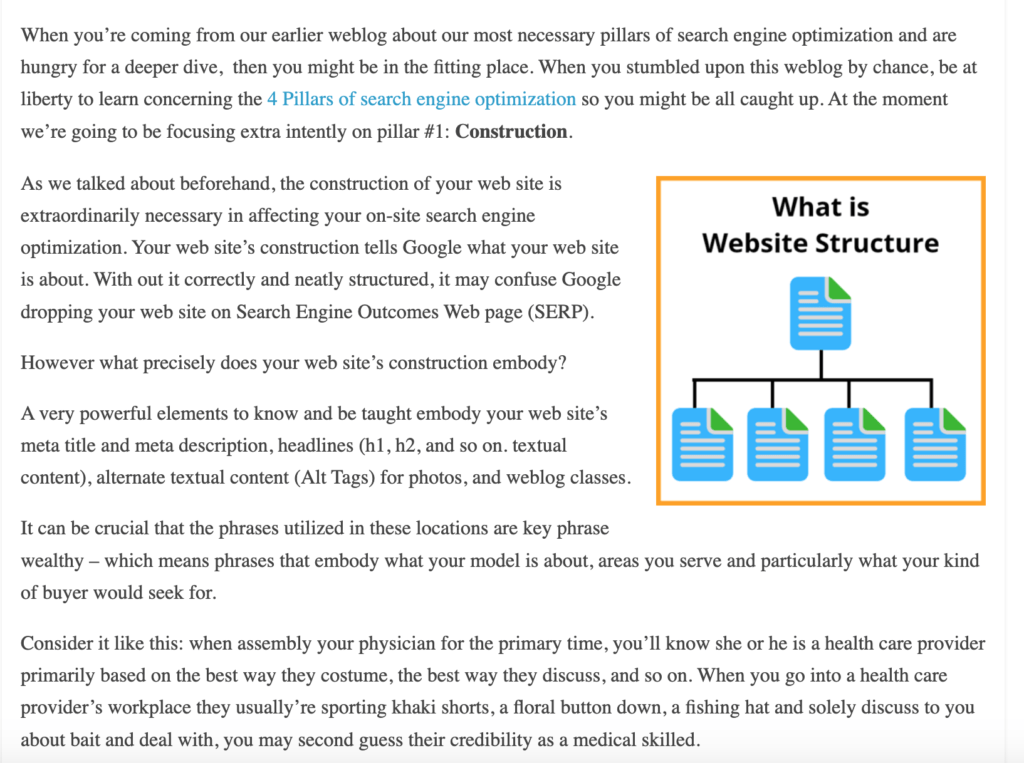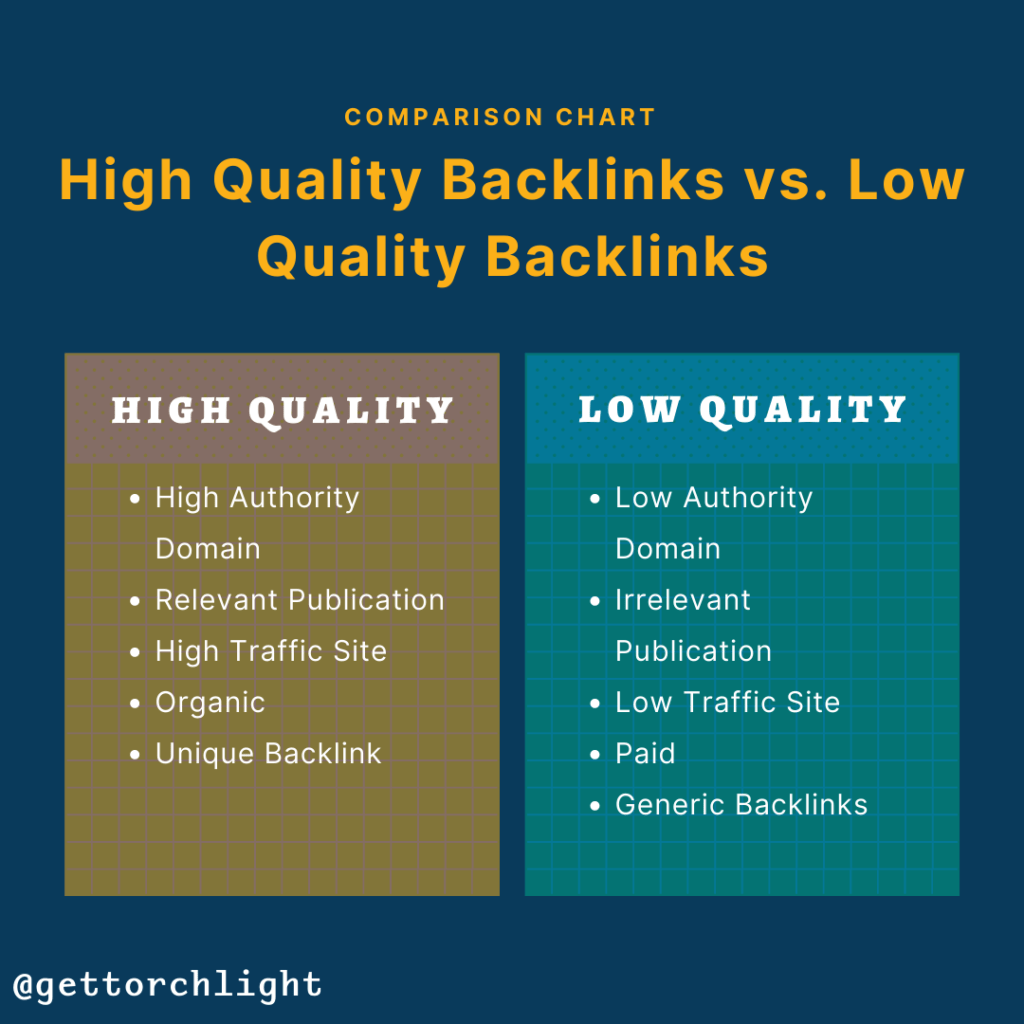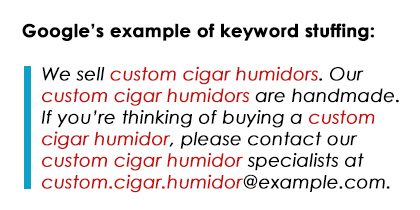At Torchlight Marketing, we pride ourselves on the transparency we share with our clients (and our blog readers!), whether that be with our services or simply with our base of knowledge. Our goal as a team is to expose the “snake oil” that some marketing agencies feed their clients.
By “snake oil” we’re referring to the stale tactics, and even fabricated lies that some marketers recommend in an SEO strategy. They spout half-truths and hide behind doctored reports in order to prevent their clients from knowing the truth; keeping their clients in the dark and their own pockets heavy.
One of the best ways we thought we could portray this is by sharing the top four pillars of good SEO. In fact, we dedicated 5 blog articles (1 overview article and 4 deepdive articles) in order to do so. We’ve dedicated so much time and energy into good SEO, and we thought it prudent to provide you with bad SEO tactics so you know exactly what to avoid.
Let’s get started!
#1 Sacrificing Quality for Quantity
Now if you know anything about SEO and tactics to improve it, you know consistent content isn’t a suggestion– it’s a necessity.
With this idea in mind, it can be tricky balancing the constant need for more content with ensuring that it is also quality content.
But the tactic we want to divert you from is just that: compromising the quality of what you post simply to be able to post more content on your site.
A common tactic we see some site’s utilizing is straight up plagiarism. This can occur where a site will repost an article already found on the internet but change any of the original site’s branding language into their own– making it seem like an original piece.
In fact, this just happened to us! The photo on the right is a screen capture of an original Torchlight Marketing article found on another site, attempting to pass as its own.
We found that a site took one of our previous SEO deepdive articles,“Getting Google To Understand You: A Deepdive Into Website Structure” and posted it to their site as their own. They changed some wording and switched “Understand” to “Perceive” in their title, but that is plagiarism all the same.
Not only is this extremely frustrating and disrespectful to the original author, but unhelpful to the site’s SEO as a whole.
Remember we want new content for the internet too, not just new content for your site.
#2 Weak Backlinks
On the topic of links, let’s talk about backlinks– specifically the quality of them.
Unfortunately not all backlinks are created equal, and the quality of your backlinks is a lot more important than you might think.
As a refresher, backlinks are external links that link back to your site (say the word “link” 5 times fast). Backlinks can greatly help your site’s SEO because the website giving you the backlink is basically telling Google that your site is important and that you’re an authority figure when it comes to the content at hand. However, gone are the days where any backlink is a good one. Now more than ever, Google is focused on the quality of those backlinks.
What makes a backlink low quality?
The source that your backlink is from is what determines its quality and whether or not it is a strong or weak backlink.
Sites with a higher authority are going to provide a stronger backlink. In the world of news, The New York Times (or other national news sources) are examples of high authority sites. While a local small town newspaper is still a good source, it doesn’t compare to the authority that The New York Times has.
It is important to note that just because a backlink isn’t as strong as one produced from the New York Times, doesn’t make it a bad backlink. A truly bad backlink is one that comes from a completely unrelated website or those with no credibility such as conspiracy sites. Furthermore, a “dead” website (a site that is no longer managed) is another example of where you do not want backlinks from. Many marketing agencies might disguise their “hard work” by producing you hundreds of bad backlinks that are of no use. This is a completely pointless strategy that is a waste of your money and something that Google can see right through. (So if this sounds familiar to what might be happening with you now…run!)
If your marketer is creating a few backlinks per month, it probably means they are working hard at creating each one, but if they are selling you hundreds or thousands of backlinks each month, then these are mass-produced, low quality and are hurting your authority more than anything.
#3 Only Focusing on One Topic
The content you post on your site is one of the most important ways that both Google and your customers are able to find out what you’re all about. One thing that could potentially hinder that, is by solely focusing on one topic.
No matter what industry you are in, you need to show that your business is dynamic. This gives you a greater possibility to expand your clientele and therefore your profits. It will also show Google that you’re a valuable business that has a wide range of things to offer to many different types of people.
Now we aren’t suggesting that you intentionally include content on your site that has nothing to do with your business– simply, expand your content to include all aspects of your business, even some you may be forgetting.
For example, if you’re a moving company, is your only service moving a customer’s belongings from one place to another? Or do you offer packing services as well? Do you offer local moves, long distance moves or both? Surely as a moving company you also have plenty of tips on the best time of year to move, how to pack valuables, a moving day checklist, etc.
For some industries, only focusing on one topic might make the most sense, especially if you plan to have multiple sites and are working to attract as much organic traffic as possible. However, a multi-site strategy may not be the most reasonable. When multiple sites are introduced into the mix, website management and hosting can get pricey, and secondly, sometimes having different sites for the same business can confuse users.
To keep things simple, you want your site to present what your business is about in the best, most user-friendly way possible. As Donald Miller says, “If you confuse, you lose.” Ultimately, anything that is negatively affecting your site’s user experience, is going to negatively affect your leadflow. And if people do not engage, it will affect your site’s PageRank.
#4 Keyword Stuffing
No, keyword stuffing is not some weird, Thanksgiving side-dish metaphor, but the term used for using too many of the same keyword in your content– to the point that your copy reads unnatural and awkward. This usually entails adding your keyword as many times as possible (sometimes, even if not relevant) but it actually does more harm than good in the long run.
We should all know by now the importance of keywords in your site’s content but there is such a thing as “too much of a good thing”.
Take a look at this example:
Within 3 short sentences, the copywriter of this managed to awkwardly stuff the keywords “custom cigar humidors” 5 times in an attempt to rank higher for this keyword. Years ago this tactic may have worked, but nowadays Google is too smart for this trick. Google can pick up on this practice and not only does this not help you rank better for your keyword, but it can actually negatively affect your site’s SEO.
Rather than trying to stuff your content, distribute your keywords so that your copy reads naturally. Try being more consistent with posting your content so that the quantity of your keywords on your site is increasing without risking the quality of the content.
#5 Hidden Text
Alrighty, to round out our list of bad SEO tactics, we had to touch on hidden text.
This is an SEO tactic from about 20 years ago that sites employed to increase the keywords on their site by hiding them through the color of the text, setting the font size to 0, hiding text behind images, etc.
This is a big no-no in Google’s eyes because, well, it’s kind of like cheating. And if you take away one thing from this blog, it’s that Google doesn’t like cheaters.
In fact, Google has long implemented technology to see hidden text on a page, and due to it going against Google’s Webmaster Guidelines, will penalize the site if it finds hidden text.
Besides, there are far better ways to increase your site’s keywords than hiding them all over your site: posting relevant content that you update regularly and properly using alt tags to name a couple.
Takeaway
Now hopefully after reading this, you are able to either learn a few SEO tactics to avoid, or maybe you suspect your marketing company may be doing some of these now. In either case our hope is that you have learned the harmful effects they can have on your business and how to identify them.
SEO can certainly be intimidating with the amount of aspects it encompasses. Taking into account the tactics you should be doing and the ones you shouldn’t be doing, all while knowing that it changes constantly…well, it can feel dizzying trying to master it all.
The most important thing is to keep learning about it. You don’t have to “master” SEO (no one can!) in order to utilize it and increase your own website’s PageRank. As long as you’re trying your best to learn about the most important aspects of it, you’re on the right track.
If you want to keep reading about SEO and the most important aspects of it, try looking at our 4 Pillars of SEO series! If you’re looking for even more help, contact us to learn more about the SEO services we provide!





